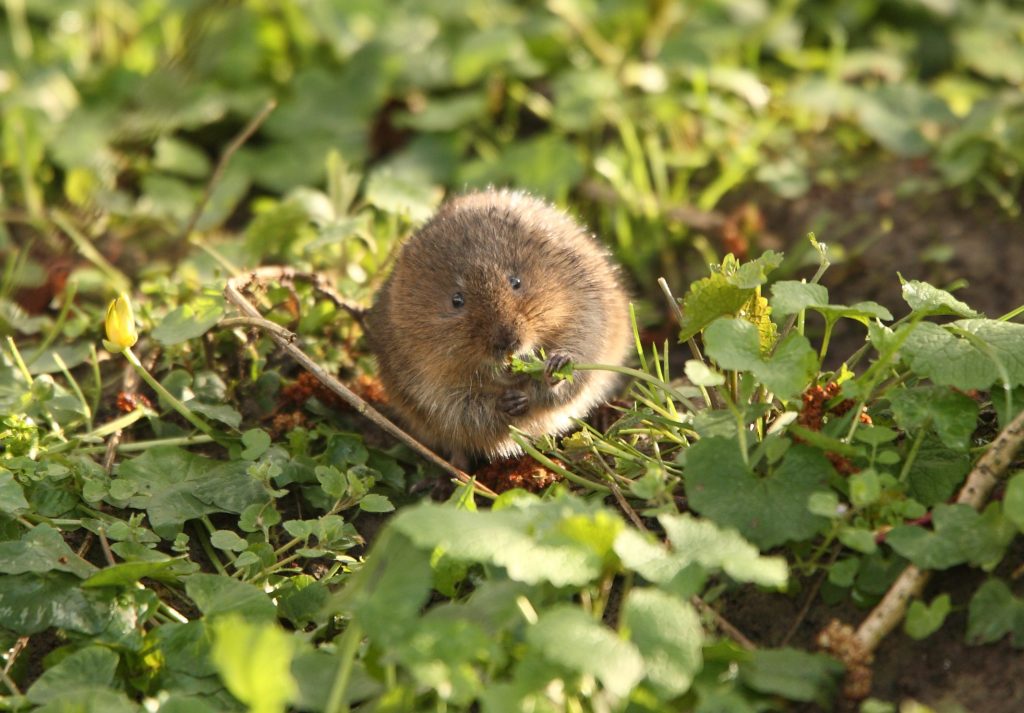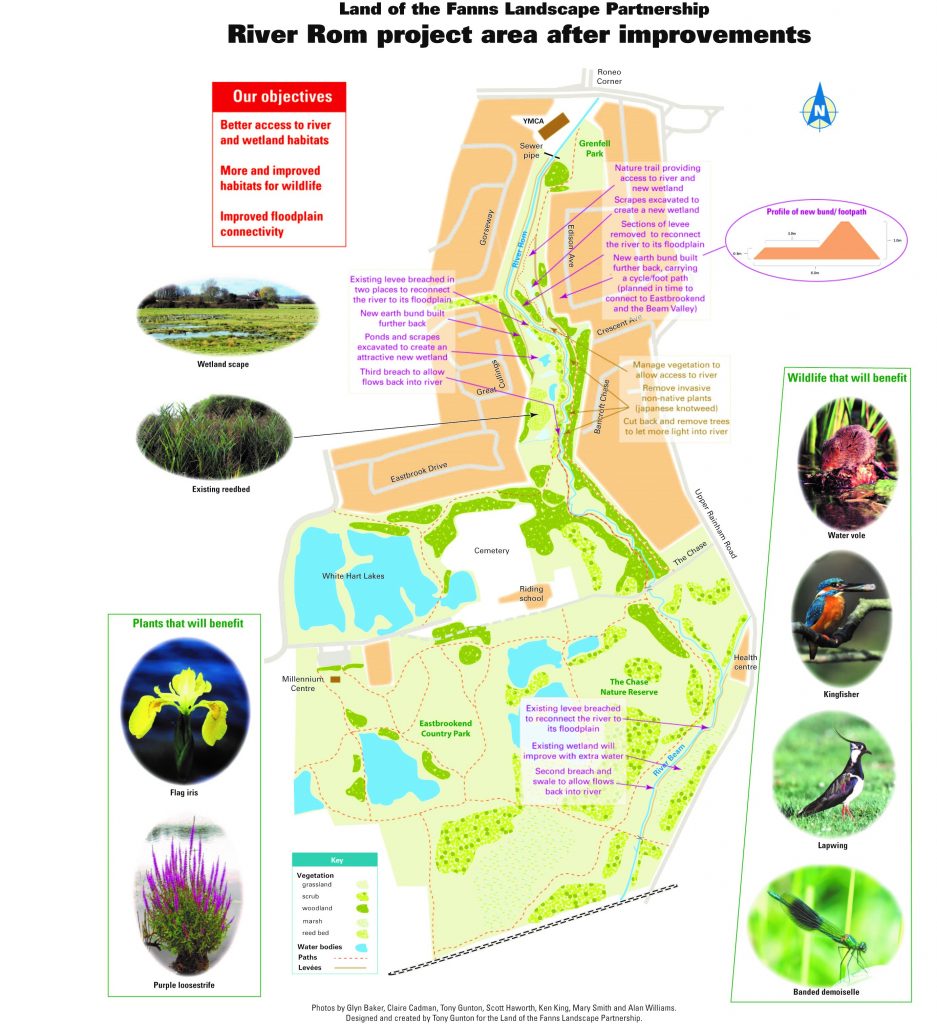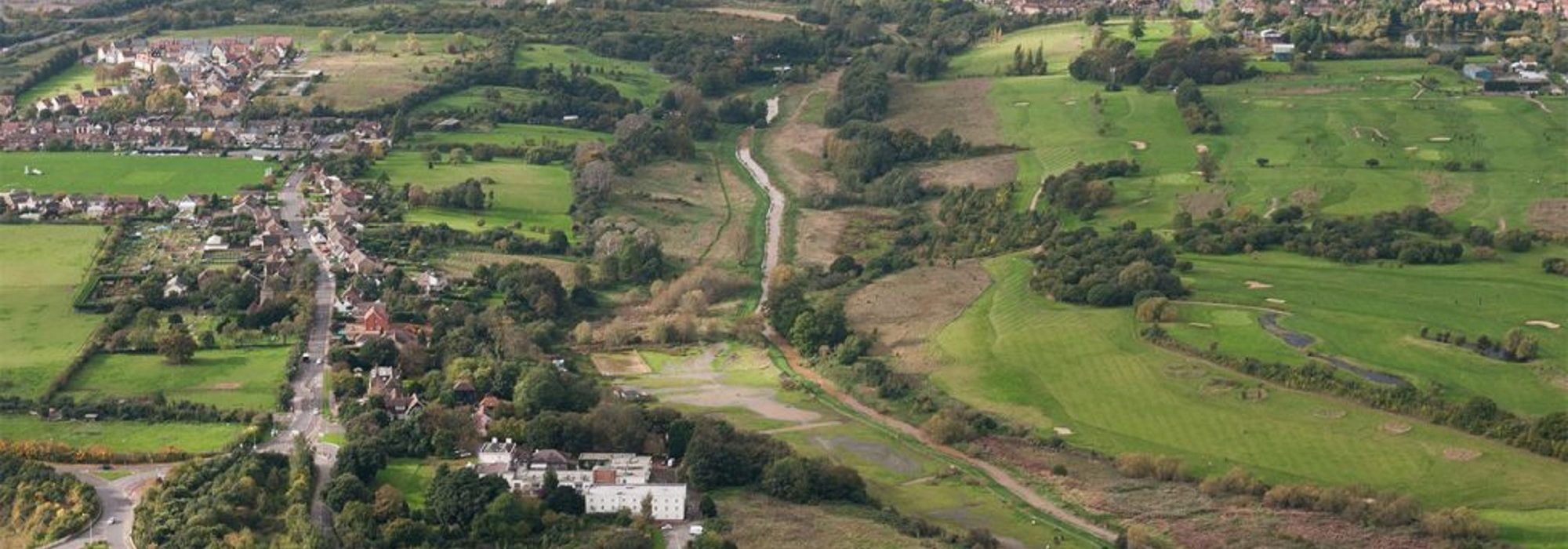River restoration: Rivers of the Fanns
Thames21 has been entrusted by the Land of the Fanns Partnership Scheme to improve three rivers in the Land of the Fanns landscape: the Rom/Beam, the Ingrebourne, and the Mardyke, where we are creating and restoring habitat in the valley. These three rivers are all Thames tributaries, flowing north to south.

Improving river habitats
As in many other areas, these rivers have become separated from their flood plain, artificially straightened and now suffer from pollution. As a result of the fragmented landscape, local communities are no longer accessing the rivers as they did in the past.
Over the next four years we will enhance each river corridor in a number of ways: improving the physical condition of the river and floodplain to boost wildlife; eradicating invasive non-native plants such as Japanese knotweed; improving access to and signage on the rivers; and reconnecting the community to their river through events, training and volunteering.
There will be opportunities for local people to gain experience and skills in using hand-held conservation tools, citizen science, carrying out ecological surveys and learning about non-native plant management.
We will also engage local schools through creating digital education resources and potentially offering guided school visits.
Protecting endangered species and benefiting communities
The vision is for these rivers to become healthier, more accessible and inviting to the people who live nearby. As sections of these rivers are removed from straightened channels and reunited with their flood plain, this will provide more attractive green space for people to visit, and also cut flood risk by allowing the natural landscape to soak up and slow the flow at times of heavy rainfall.

We will create suitable habitat for water voles, the UK’s fastest declining mammal. Ten per cent of the UK’s water vole population subsists at Rainham, which sits with the Land of the Fanns project area. We will also provide habitat for great crested newts, Britain’s largest and most threatened newt.
This project will educate communities about their landscape and offer the chance to make decision on how to look after it, for the benefit of wildlife and people. We aim to give interested residents the skills to help manage their river catchments, in order to ensure a legacy into the future.

The partnership is made up of the Environment Agency, Thames Chase Trust, the London Borough of Havering, the London Borough of Barking & Dagenham, Brentwood Borough Council, Thurrock Council, Essex County Council, Havering Wildlife Project, Veolia Maintenance Trust, RBI Catchment Partnership, South Essex Catchment Partnership, Romford YMCA, the Forestry Commission, Thames21 and the Thames Estuary Partnership.
